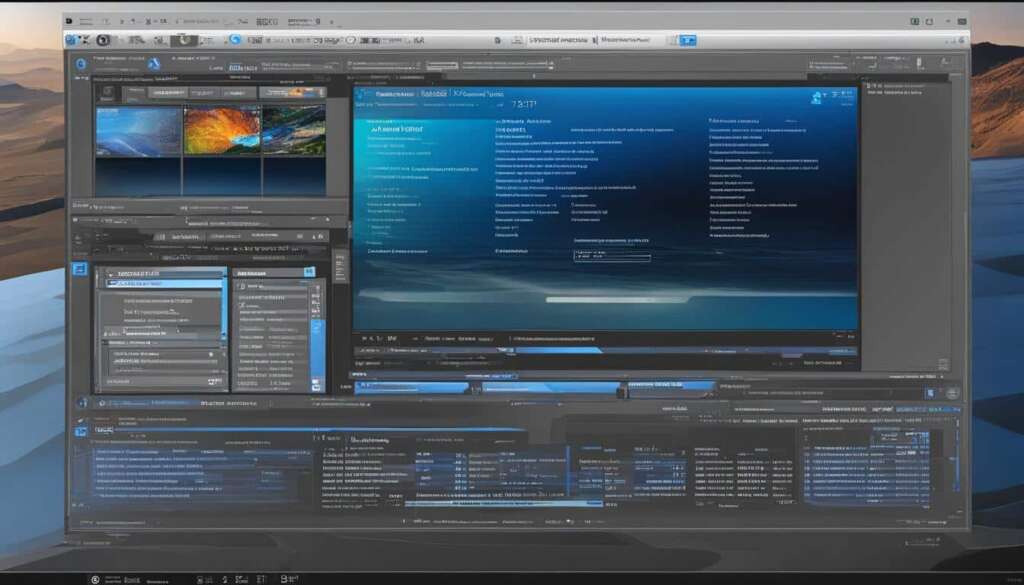Table of Contents
Are you wondering how to see your PC specs on Windows 10? Knowing the specifications of your computer can be essential for ensuring that it meets the requirements of certain programs or games, as well as troubleshooting any performance issues. In this article, we will explore different methods to easily view and check your computer’s specifications.
Whether you need basic or detailed system information, Windows 10 offers various options to satisfy your needs. By accessing the Control Panel or the Settings app, you can quickly find basic system information, including details about your processor, memory, and Windows version. Alternatively, you can use the System Information app to obtain comprehensive information about your computer, such as your processor, memory, BIOS, and more.
If you require specific details about your video card, the System Information app can help you access that information. Additionally, the DirectX Diagnostic Tool can provide you with detailed insights into your graphics and audio settings, assisting you in troubleshooting any related issues you may encounter.
For advanced users, Command Prompt and PowerShell offer command-line methods to check your PC specs. By running commands like “systeminfo” or “dxdiag,” you can retrieve detailed information about your operating system, processor, RAM, and other hardware components. These advanced methods give you more technical options to examine and analyze your PC specs.
In summary, there are several ways to view your PC specs on Windows 10. By utilizing the built-in tools and apps, you can easily access basic and detailed system information, ensuring that your computer meets your requirements and functioning optimally. Now, let’s explore each method in detail, starting with how to find basic system information on Windows 10.
How to Find Basic System Information
To view your PC specs on Windows 10, you can easily find basic system information through two main methods: accessing the Control Panel or using the Settings app. These options allow you to check details about your processor, memory, and the version of Windows you are running.
Accessing Control Panel
One way to find basic system information is by accessing the Control Panel. Follow these steps:
- Click on the Start button and search for Control Panel.
- Open the Control Panel from the search results.
- Navigate to the System and Security section.
- Click on System to view information about your processor, memory, and Windows version.
Using the Settings App
Another option to find basic system information is by using the Settings app. Follow these steps:
- Click on the Start button and select Settings (the gear icon).
- In the Settings app, go to the System section.
- Click on About to see information about your computer, including the processor, installed memory, and Windows version.
By utilizing these methods, you can quickly obtain a general overview of your PC specs, including essential system details relevant to finding basic system information.
How to Find Detailed System Information
If you need more detailed system information, you can use the System Information app on Windows 10. This app catalogs comprehensive information about your computer, including details about your processor, memory, BIOS, and more.
You can find most of the information you need on the first page of the System Summary node. Additionally, the app allows you to expand each node in the left pane for additional information.
For specific details about your graphics card, you can navigate to the Components section and click on Display.
Another tool you can use to find information about your graphics and sound cards is the DirectX Diagnostic Tool. This tool provides detailed information about your hardware and can help troubleshoot any issues related to graphics or audio.
Summary:
When it comes to finding detailed system information on Windows 10, the System Information app and the DirectX Diagnostic Tool are invaluable resources. By exploring the various nodes and sections in these tools, you can uncover detailed insights about your computer’s hardware, including your processor, memory, BIOS, and graphics and sound cards.
Checking PC Specs Using Command Prompt and PowerShell
For advanced users, there are additional methods to check PC specs on Windows 10 using Command Prompt and PowerShell. By opening the Command Prompt or PowerShell window, you can run specific commands to retrieve information about your PC specs. One command you can use is “systeminfo,” which displays details such as the operating system, processor, RAM, and more.
Another command you can use is “dxdiag,” which launches the DirectX Diagnostic Tool. This powerful tool provides in-depth information about your video and audio settings, making it an essential resource for gamers, content creators, and anyone needing detailed hardware information. With dxdiag, you can analyze your video card’s capabilities, verify driver compatibility, and troubleshoot graphics or audio-related issues.
These command-line methods offer more technical options for checking your PC specs, providing a deeper understanding of your computer’s hardware configuration. Whether you’re a system administrator, a tech enthusiast, or simply curious about your PC’s capabilities, utilizing Command Prompt and PowerShell allows you to access and analyze your PC specs efficiently and effectively.
FAQ
How can I view my PC specs on Windows 10?
There are various methods to view your PC specs on Windows 10. You can find basic system information through the Control Panel or the Settings app. For more detailed system information, you can use the System Information app. Additionally, advanced users can check PC specs using Command Prompt and PowerShell.
How do I find basic system information on Windows 10?
To find basic system information, you can access the Control Panel or the Settings app. In the Control Panel, navigate to the System and Security section. In the Settings app, go to the System section and click on About.
How can I find detailed system information on Windows 10?
To find detailed system information, you can use the System Information app on Windows 10. This app provides comprehensive information about your computer, including details about your processor, memory, BIOS, and more. You can also find specific details about your video card in the Components section.
How do I check PC specs using Command Prompt and PowerShell?
Advanced users can check PC specs using Command Prompt and PowerShell. By opening the Command Prompt or PowerShell window, you can run specific commands like “systeminfo” to retrieve information about your PC specs. Another command you can use is “dxdiag” to launch the DirectX Diagnostic Tool, which provides in-depth information about your video and audio settings.












